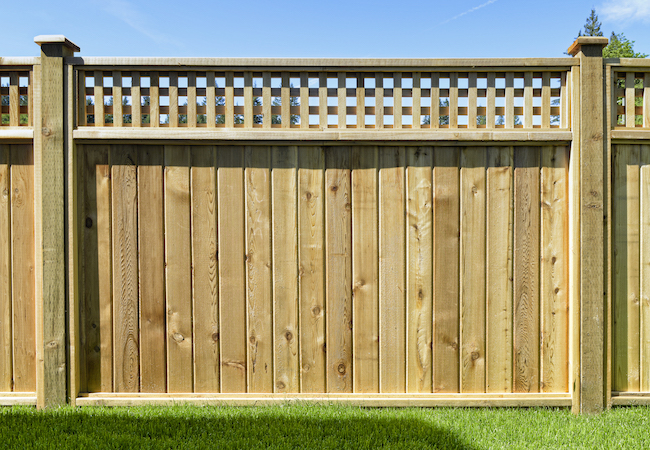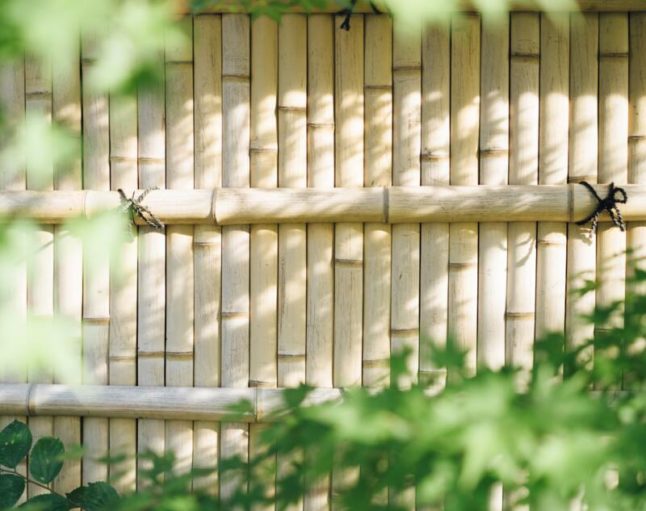All Categories
Featured
Fences play an essential role in giving privacy, safety and security, and improving the curb allure of your residential or commercial property. However, continuous direct exposure to the aspects can cause deterioration. From hefty rain and snow to extreme sunlight and wind, weather-related damage is among one of the most typical reasons for fencing wear and tear. While you can't regulate the weather condition, there are several ways to protect your fence from the destructive results of weather condition and guarantee it lasts for many years to come.
Wood Fences: While wooden fences are a timeless choice, they are very vulnerable to dampness and insects. To make a timber fencing a lot more resilient, choose pressure-treated lumber, cedar, or redwood. These products are more resistant to rot and insects. You'll still require to safeguard the timber from the components with normal maintenance.
Vinyl Fences: Vinyl fencings are extremely long lasting and need little maintenance. They are immune to fading, splitting, and bending, making them optimal for regions that experience extreme sunlight, rainfall, or cool weather. Plastic likewise won't rot or draw in insects, using long-lasting security without the requirement for constant upkeep.
Steel Fencings: Wrought iron and light weight aluminum fences are excellent choices for their stamina and resistance to wind and moisture. However, they are susceptible to rusting with time, specifically if exposed to constant rainfall or moisture. Choose powder-coated or galvanized metal fencings to minimize the danger of corrosion.
![]()
Composite Fences: Integrating wood fibers and plastic, composite fences are resistant to decomposing, fading, and pest damages. They offer the look of timber with much less upkeep, making them an ideal alternative for areas with variable weather.
![]()
Wood Fences: A great quality timber sealer or stain is vital to safeguard your fencing from the elements. Be certain to reapply the finishing every pair of years to keep your fencing in top problem.
Plastic Fences: While plastic is low-maintenance, you can still safeguard it additionally by applying a UV protectant. These coverings aid avoid discoloration brought on by long term sunlight direct exposure. Additionally, make use of vinyl-specific cleaners to maintain the surface area devoid of stains or dirt accumulation.
Steel Fences: To protect metal fences from rust and corrosion, take into consideration applying a rust-inhibiting guide complied with by a safety paint designed for outdoor usage. Powder layer supplies a sturdy and durable finish that can hold up against severe weather condition. if possible.
Wood Fences: Clean your wood fencing with a stress washer or a soft cloth and light cleaning agent. Be sure to get rid of leaves, mold, and dust that can hold wetness versus the wood. Check the fencing frequently for indicators of rot, fractures, or insect problems. Early detection can avoid tiny troubles from transforming into expensive fixings.
Vinyl Fences: Plastic fences are easy to clean with soap and water. For harder discolorations, you can use a moderate bleach service or a plastic cleaner to recover the fence's look. Do not neglect to examine for any cracks that might let water in, causing more damage.
Metal Fences: Clean steel fences with a soft towel to get rid of dust, dust, and rust. If you notice corrosion areas, eliminate them instantly with a wire brush and deal with the location with a rust-resistant guide or paint to stop it from spreading out.
Wooden Fencings: When setting up wooden fence blog posts, make sure they are set deeply right into the ground, ideally below the frost line to avoid shifting throughout freezing temperature levels. Usage concrete to secure the posts and avoid them from leaning or being rooted out by solid winds.
Metal Fences: For metal fences, guarantee that the messages are securely secured in concrete. This is particularly crucial in areas with regular tornados or hefty winds. You might likewise intend to set up extra bracing to give additional assistance against wind anxiety.
Furthermore, extreme moisture from neighboring plants can bring about mold and rot in wooden fencings, so maintain vegetation at a secure distance to permit appropriate air flow and drain.
Metal fencings should be checked for corrosion before the winter begins, and any kind of affected locations ought to be treated with rust-resistant products. Additionally, using a layer of paint or safety layer before the chilly climate sets in can assist protect your fencing from ice and snow damage.
![]()
Verdict. Securing your fence from weather-related damage requires a combination of proper material selection, regular maintenance, and aggressive treatment. Whether you have a wooden, vinyl, steel, or composite fence, the appropriate safety steps can expand its life-span and maintain its appearance. By following these simple yet effective steps, you can protect your fence against the aspects and keep it looking wonderful for years ahead.
- Choose Weather-Resistant Materials. Among one of the most efficient methods to secure your fencing is by selecting the appropriate material for your climate. Specific materials are more sturdy and much better matched to stand up to certain climate condition.
Wood Fences: While wooden fences are a timeless choice, they are very vulnerable to dampness and insects. To make a timber fencing a lot more resilient, choose pressure-treated lumber, cedar, or redwood. These products are more resistant to rot and insects. You'll still require to safeguard the timber from the components with normal maintenance.
Vinyl Fences: Vinyl fencings are extremely long lasting and need little maintenance. They are immune to fading, splitting, and bending, making them optimal for regions that experience extreme sunlight, rainfall, or cool weather. Plastic likewise won't rot or draw in insects, using long-lasting security without the requirement for constant upkeep.
Steel Fencings: Wrought iron and light weight aluminum fences are excellent choices for their stamina and resistance to wind and moisture. However, they are susceptible to rusting with time, specifically if exposed to constant rainfall or moisture. Choose powder-coated or galvanized metal fencings to minimize the danger of corrosion.

Composite Fences: Integrating wood fibers and plastic, composite fences are resistant to decomposing, fading, and pest damages. They offer the look of timber with much less upkeep, making them an ideal alternative for areas with variable weather.
- Apply Safety Coatings. Regardless of the product, using safety finishings is vital in prolonging the life of your fence. Coatings form a barrier that guards your fencing from dampness, UV rays, and various other ecological stress factors.

Wood Fences: A great quality timber sealer or stain is vital to safeguard your fencing from the elements. Be certain to reapply the finishing every pair of years to keep your fencing in top problem.
Plastic Fences: While plastic is low-maintenance, you can still safeguard it additionally by applying a UV protectant. These coverings aid avoid discoloration brought on by long term sunlight direct exposure. Additionally, make use of vinyl-specific cleaners to maintain the surface area devoid of stains or dirt accumulation.
Steel Fences: To protect metal fences from rust and corrosion, take into consideration applying a rust-inhibiting guide complied with by a safety paint designed for outdoor usage. Powder layer supplies a sturdy and durable finish that can hold up against severe weather condition. if possible.
- Routine Cleansing and Inspections. Appropriate cleansing and routine examinations are necessary to preserving the stability of your fence. Build-up of mold, dirt, and particles can trap wetness against your fencing and create long-lasting damage.
Wood Fences: Clean your wood fencing with a stress washer or a soft cloth and light cleaning agent. Be sure to get rid of leaves, mold, and dust that can hold wetness versus the wood. Check the fencing frequently for indicators of rot, fractures, or insect problems. Early detection can avoid tiny troubles from transforming into expensive fixings.
Vinyl Fences: Plastic fences are easy to clean with soap and water. For harder discolorations, you can use a moderate bleach service or a plastic cleaner to recover the fence's look. Do not neglect to examine for any cracks that might let water in, causing more damage.
Metal Fences: Clean steel fences with a soft towel to get rid of dust, dust, and rust. If you notice corrosion areas, eliminate them instantly with a wire brush and deal with the location with a rust-resistant guide or paint to stop it from spreading out.
- Enhance Your Fencing with Appropriate Setup. Proper installation is just one of one of the most effective ways to avoid weather-related damages. A fence that is inadequately set up is most likely to collapse or experience damage during tornados.
Wooden Fencings: When setting up wooden fence blog posts, make sure they are set deeply right into the ground, ideally below the frost line to avoid shifting throughout freezing temperature levels. Usage concrete to secure the posts and avoid them from leaning or being rooted out by solid winds.
Metal Fences: For metal fences, guarantee that the messages are securely secured in concrete. This is particularly crucial in areas with regular tornados or hefty winds. You might likewise intend to set up extra bracing to give additional assistance against wind anxiety.
- Trim Trees and Shrubs Near Your Fence. Overgrown trees and bushes can cause considerable damage to your fencing, specifically throughout heavy tornados or high winds. Tree branches can scrape versus the fencing, creating scratches, and their roots can destabilize the articles. Keep vegetation trimmed and make certain that tree branches are not leaning on or near the fencing.
Furthermore, extreme moisture from neighboring plants can bring about mold and rot in wooden fencings, so maintain vegetation at a secure distance to permit appropriate air flow and drain.
- Winterize Your Fencing. Take additional preventative measures to secure your fencing from freezing temperature levels, snow, and ice if you live in an area with extreme winters. For wood fencings, see to it the base of the blog posts rises over ground level to stay clear of water buildup, which can crack the timber and freeze. Consider using a dampness barrier around the base of the blog posts to keep them dry during the cold weather.
Metal fencings should be checked for corrosion before the winter begins, and any kind of affected locations ought to be treated with rust-resistant products. Additionally, using a layer of paint or safety layer before the chilly climate sets in can assist protect your fencing from ice and snow damage.
- Post-Storm Services. Tornados can create immediate damage to your fence, consisting of dropped branches, damaged blog posts, or dislodged panels. After each tornado, check your fencing extensively to inspect for any type of noticeable damages. Address minor problems quickly before they come to be larger, a lot more expensive repairs. If your fence has been severely damaged, it's a great idea to consult an expert for repairs to ensure it stays structurally audio.

Verdict. Securing your fence from weather-related damage requires a combination of proper material selection, regular maintenance, and aggressive treatment. Whether you have a wooden, vinyl, steel, or composite fence, the appropriate safety steps can expand its life-span and maintain its appearance. By following these simple yet effective steps, you can protect your fence against the aspects and keep it looking wonderful for years ahead.
Latest Posts
Checking out the Conveniences of WyHy Share Interest-bearing Account
Published Apr 21, 25
1 min read
Treat Shack at Huck's Harbor: A Tasty Retreat by the Water
Published Apr 21, 25
1 min read
Specials & Discounts: Unlock Discounts on Vehicle Maintenance at Montclare Auto Repair
Published Apr 21, 25
2 min read
More
Latest Posts
Checking out the Conveniences of WyHy Share Interest-bearing Account
Published Apr 21, 25
1 min read
Treat Shack at Huck's Harbor: A Tasty Retreat by the Water
Published Apr 21, 25
1 min read
Specials & Discounts: Unlock Discounts on Vehicle Maintenance at Montclare Auto Repair
Published Apr 21, 25
2 min read